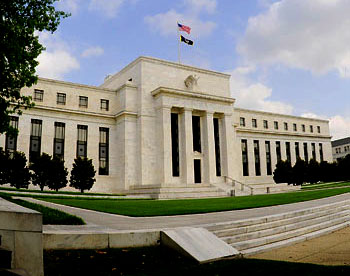 No joke. This may be boring as hell, but it really and truly is great news:
No joke. This may be boring as hell, but it really and truly is great news:
Federal Reserve officials strongly signaled they will toughen big-bank capital requirements even more than they have since the 2008 crisis, a move that will add to the pressure on the largest U.S. banks to consider shrinking. Fed governors Daniel Tarullo and Jerome Powell, in separate public comments on Thursday, said the Fed would require eight of the largest U.S. banks to maintain more equity to pass the central bank’s annual “stress tests.”
“Effectively, this will be a significant increase in capital,” Mr. Tarullo said on Bloomberg television….Mr. Powell said at a banking conference that the Fed’s move would make big banks “fully internalize the risk” they pose to the economy.
“I have not reached any conclusion that a particular bank needs to be broken up or anything like that,” he said. The point is to “raise capital requirements to the point at which it becomes a question that banks have to ask themselves.”
Bernie Sanders has campaigned heavily on the idea of breaking up big banks. But that shouldn’t be our goal. Our goal should be to make banks safer and to reduce the likelihood that they need to be bailed out in the future. That’s what higher capital requirements do: they force banks to carry a bigger buffer against losses, which makes them less likely to fail in any future downturn.
As it happens, new regulations put in place since the financial meltdown of 2008 have already increased capital requirements, but big banks still have an unfair advantage in the market: their funding costs are lower because investors figure they’ll be bailed out if they ever implode in the future. To make up for this, big banks should, as Tarullo said, “fully internalize the risk” they pose to the economy. In other words, if big banks have an automatic advantage simply because taxpayers have little choice but to rescue them in case they fail, they should be required to pay higher insurance premiums against failure. That’s essentially what higher capital requirements do.
This is fair. However, higher capital requirements also make big banks less profitable, which in turn gives them a strong incentive to downsize all on their own. And that’s how it should be. There’s no reason for the Fed or anyone else to pick and choose banks to break up. We just need to make sure they’re reasonably safe and are operating on a level playing field. If we do this, we’re providing an organic incentive to downsize. The banks themselves get to decide whether and how to do it.
The only bad news here is that the Fed is unlikely to raise capital requirements enough to suit me. Nonetheless, this is very much another step in the right direction.
















